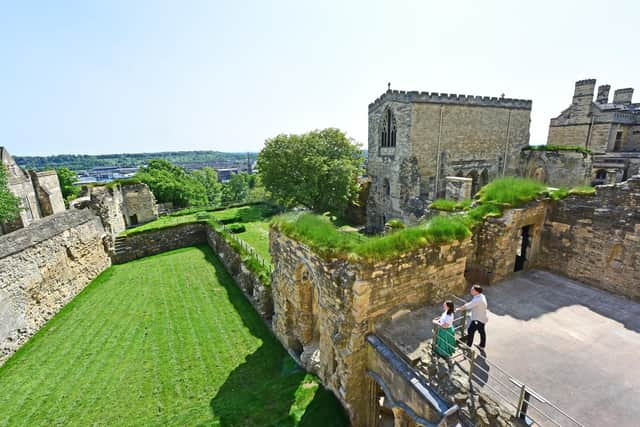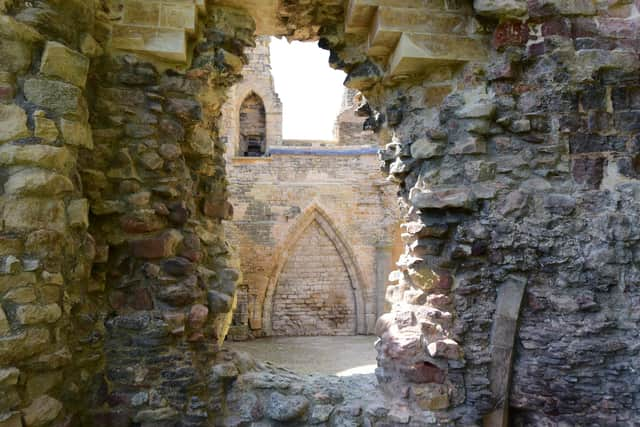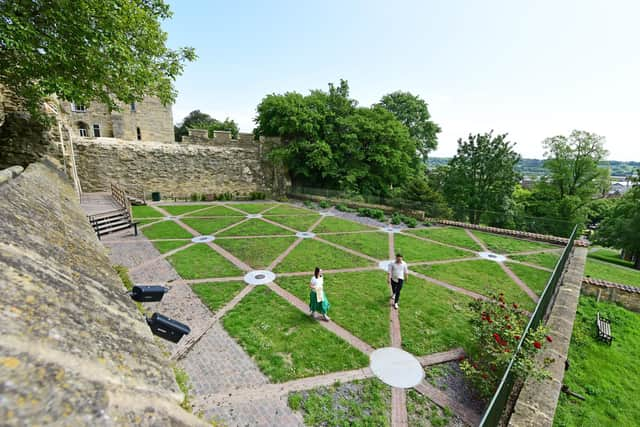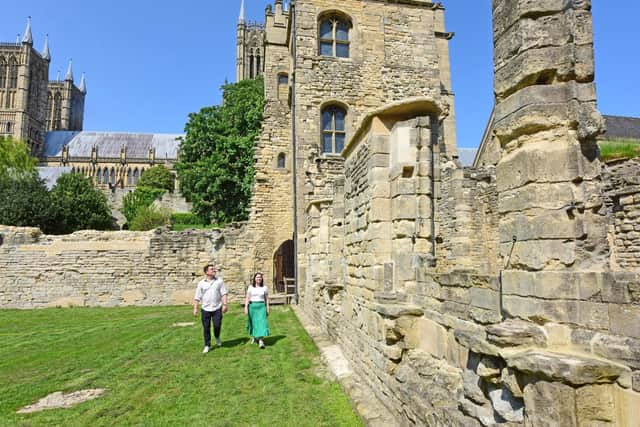Blanket of turf saves one of medieval England’s most important buildings
This article contains affiliate links. We may earn a small commission on items purchased through this article, but that does not affect our editorial judgement.


English Heritage’s Bishop’s Palace at Lincoln has now reopened after the extensive conservation project.
‘Soft capping’ the wall-heads is just one of a range of conservation techniques employed by the charity to halt the decline of the building’s historic stonework at the former home of the Bishops’ of Lincoln, the centre of power for the largest diocese in medieval England for nearly 500 years.
Advertisement
Hide AdAdvertisement
Hide AdThough the palace housed bishops and their households between the 12th and the 17th centuries, the site spans a much longer history, containing part of the Roman city wall, which also needed conservation.


Significant decorative features, including the marble columns in the west porch have also been preserved.
Jeremy Ashbee, Head Properties Curator, at English Heritage said: “This conservation project will ensure the protection of the remains of the building and safeguard some of its unique decorative treasures - including the arches and marble columns in the west porch.”
From a laser scan of the buildings – ruined and exposed to the elements since the Civil War - the most appropriate method of repair for each area of the palace was planned using computer modelling software.
Advertisement
Hide AdAdvertisement
Hide AdA team of specialist stonemasons then removed damaging vegetation from the ruins, repairing the masonry with traditional lime-based mortar and local Lincoln limestone and capping the wall-heads.


This involved ‘soft capping’ with soil and grass in some areas, as well as lead or stone slate capping, capping with new stone slabs and ‘rough racking’ – a process used to create a new wall-head in rubble masonry, so water runs off it without pooling and causing water damage to the building.
In the undercroft of the historic palace kitchen, a medieval arch was found to be unstable, requiring complete reconstruction.
Mr Ashbee added: “Lincoln Medieval Bishops’ Palace was once one of the most important buildings in England, and in its day, just as magnificent as the lovely cathedral in whose shadow it stands.
Advertisement
Hide AdAdvertisement
Hide Ad"That’s the reason why conservation here is so important, because the fragments of what survive are witness to a long and illustrious history.”


The historic palace was occupied between the 12th and 17th centuries.
Terraced into a steep hill, the principal remains of the property are two north-south ranges, the open hall of Bishop Hugh of Avalon (St Hugh) and the remains of a two storey building attributed to Bishop de Chesney (thought to be a chamber block) the under-croft of a very large kitchen at the south end of St Hugh’s hall, and buildings on the north side of the 14th and 15th centuries.
The palace has been a ruin for more than 350 years since it suffered damage in the Civil War in the 1640s. The 15th-century Alnwick Tower was restored in the 19th century and is roofed, as is the 19th-century stable block in a Tudor revival style.
Advertisement
Hide AdAdvertisement
Hide AdAt the southern extreme of the site lie a vineyard and a contemporary heritage garden.
Lincoln Bishops’ Medieval Palace is open on Fridays, Saturdays and Sundays throughout the summer.
Tickets can be booked online at https://www.english-heritage.org.uk/visit/places/lincoln-medieval-bishops-palace/